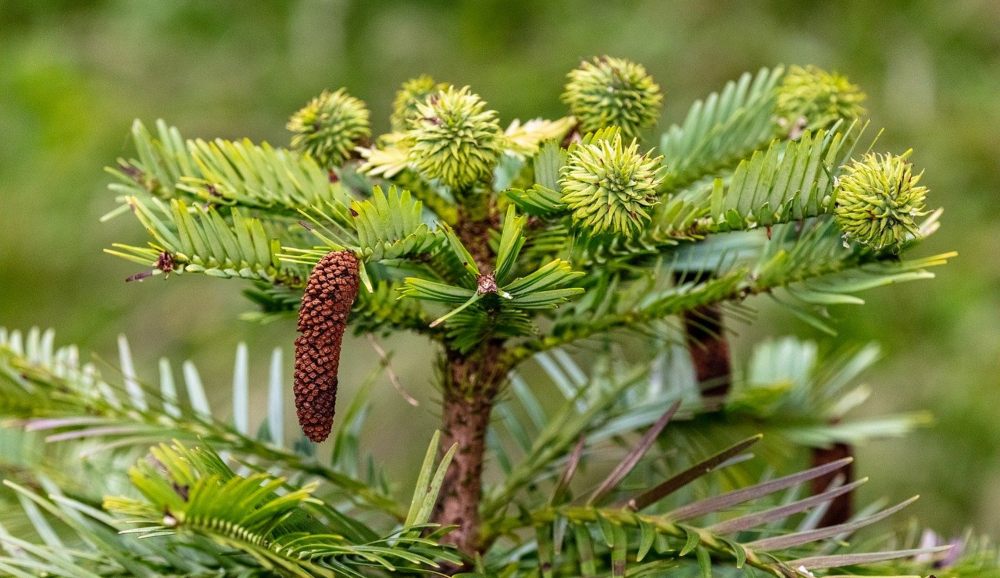
Two centuries ago, the European Enlightenment was marching across North America, abetted and expanded by amateur scientists such as Benjamin Franklin, Thomas Jefferson, and members of the American Philosophical Society. Investigations were underway in all the natural sciences on several continents. Clubs were formed to initiate scientific trips westward and beyond, and awards honored discoveries. School systems – especially in Scotland, England, and France – introduced science in all its forms. In England the Royal Horticultural Society published papers and held seminars.

During this intellectual whirlwind a child was born on June 25, 1799 to a stonemason and his wife in the village of Scone, near Perth, Scotland. Young David Douglas entered the burgeoning Enlightenment and became a famous participant in its productions and explorations, notably in the Northwest.
After attending local schools, Douglas’s attention was focused on gardening. Entering the service of the Earl of Mansfield and Sir Robert Preston, Glasgow landowners, the young boy met the gardener’s curator, Stewart Murray, and British botanist Sir William Jackson Hooker. Douglas was encouraged to attend lectures and investigate local botanical libraries. Hooker described the stonemason’s son as a person of “great activity, singular abstemiousness, and energetic zeal.”
In 1823 Sir William recommended his student to the Royal Horticultural Society as a staff botanical collector. The word “collector” would henceforth be associated with Douglas’s name. Many explorations were underway, including Capt. George Vancouver’s 1792 trip to Puget Sound. It was time for 24-year-old David Douglas to enter the scene. A botanical trip to China fell apart, so the Royal Horticultural Society dispatched the eager young man to the Columbia River, Oregon Country. Douglas found passage on a Hudson’s Bay Company vessel, arriving at Fort Vancouver on April 7, 1825. The Society was particularly interested in fruit and forest trees.
Traveling alone up Oregon’s Willamette Valley with a walking stick, rifle, and rucksack, Douglas described everything, including Native use of fire, which caused the emergence of greenery for deer hunting and created conditions conducive to producing wild honey and edible grasshoppers. On subsequent trips (four to North America, three in the Pacific Northwest), he examined the Umpqua River in search of what he called the “sugar pine.” Following a tip from another explorer, he found the giant cones hanging at the tips of branches “like small sugar-loaves in a grocer’s shop.” While shooting cones out of the trees he attracted the attention of several Natives, who appeared to be unfriendly. After a tense discussion about their desire to have tobacco, Douglas agreed to provide the treat if they helped him find more cones. Once his visitors left in search of the pine cones, Douglas took off in the opposite direction.
An interesting anecdote from the Douglas journal describes his viewing “Mt. Coffin,” a hill (now gone) near today’s Longview where he saw canoes holding the remains of Natives and watched them slide into the Columbia and float westward. Douglas wrote: “I intended (to collect) the skulls of dogs, wolves, and bears . . . none of men, for fear (others) might make a second voyage to the Northwest coast and find mine bleached in some canoe.”
The Royal Horticultural Society named the famous Douglas fir in his honor. His name would also be attached to the Douglas squirrel, the mountain beaver, and over 80 other plants and animals. Douglas described – and shot – California condors on the Columbia River. He introduced over 200 Pacific Northwest plants to Great Britain, including the Sitka spruce. At Scone Castle, near his birthplace, a large Douglas fir stands in his honor.
David Douglas returned to London in 1828-1829. In 1831-1832 he collected on the California coast, followed by two visits to the Hawai’ian Islands. On his second visit to the islands in 1834 he fell into a deep pit dug by Natives to capture cattle. Details of Douglas’s death are sparse, and include guesswork because his remains were discovered at the bottom of an Hawai’ian cattle trap. Was the animal already trapped below? Or did Douglas fall first, followed by the alarmed bullock?
Discover more from Post Alley
Subscribe to get the latest posts sent to your email.
